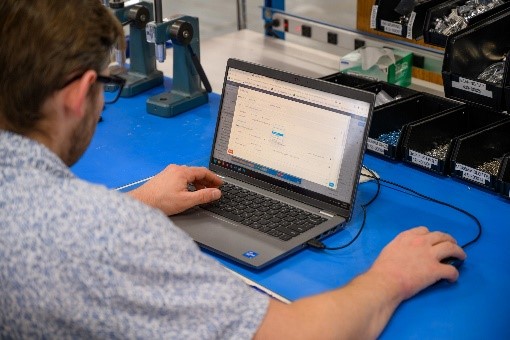Table of Contents
No-Code Platform
No-code is a term used to describe a method of creating software, such as websites and apps, using visual drag-and-drop interfaces instead of code. In other words, no-code allows anyone, regardless of their technical ability, to build on the internet.
And by “build on the internet” we mean creating your own infrastructure that brings your ideas for web-dependent projects to life. It could be an app, an online business, a game, a community, or anything else in between.
No-code is changing the way people create, launch and run businesses that utilize the internet at an unprecedented scale.
No-code and low-code platforms have transformed and democratized enterprise software-as-a-service. What used to be exclusively the domain of software developers, programmers and IT teams is now accessible to just about anyone who has some experience with if/then logic and drag-and-drop design tools like PowerPoint.
Manufacturing Industry Shift
The manufacturing industry is no exception, though it presents a different set of challenges than software built for sales, customer service, marketing or design teams. Primarily that manufacturers produce physical outputs on the factory shop floor, not in offices with teams of developers. Successful no-code platforms for manufacturing will meet the end users where they are — on the frontline, at the work, in the plant.
Further, they’ll be accessible enough for those operators and engineers to build applications that solve their most pressing problems without any coding — as opposed to low-code platforms that do still require some programming background. And these platforms are purpose-built for manufacturing, designed to be deployed in the factory and supported by teams that understand the use cases.

Technology for Tomorrow – No Code Platforms
The first and most critical aspect of manufacturers’ embrace of no-code tools is that they are mature, sophisticated, and reliable platforms. Modern SaaS tools are among the most complex and capable pieces of software in today’s tech world.
By empowering non-developer end users to build applications and solve for immediate needs fast, no-code tools gain higher rates of adoption
and penetrate further into the organization than legacy platforms owned solely by full-time programmers and IT.
Challenging Manufacturing
Manufacturing has long been at the forefront of process technology, from interchangeable parts to the assembly line to AI and automation. No-code platforms are not a new concept, but have been slower to penetrate manufacturing simply because most software vendors have built their products for a different audience: not production facilities but office suites.
- With purpose-built no-code platforms for manufacturing, these organizations now have another tool in their belt to streamline processes, elevate worker productivity, and deliver better quality at a greater scale and a lower cost.
Why choose no-code?
There are many varying reasons why someone might choose to use no-code over other options, but there are a few common characteristics that apply in all instances.
- It’s faster
No-code tools are built for speed and efficiency by abstracting the difficulty and complexity of coding away from building a product.
- It’s cheaper
No-code tools allow anyone to design and build their own product without having to hire a developer or spend lots of time learning how to code themselves.
- It’s more accessible
No-code allows people with varied backgrounds, like creatives and makers, to build their own products and bring them to life on the web. No-code doesn’t discriminate. You only need a laptop and internet connection to start building with no-code tools today.
- Low-code vs. no-code
“Low-code” refers to the slightly gray area between zero code and code. Sometimes, you might need to use lines of code here and there to get something done, but we would still consider that to be no-code if you’re using a tool with an entirely visual interface.
The main difference between low-code and no-code is in the tools themselves. Low-code tools differ from no-code tools in two ways.
